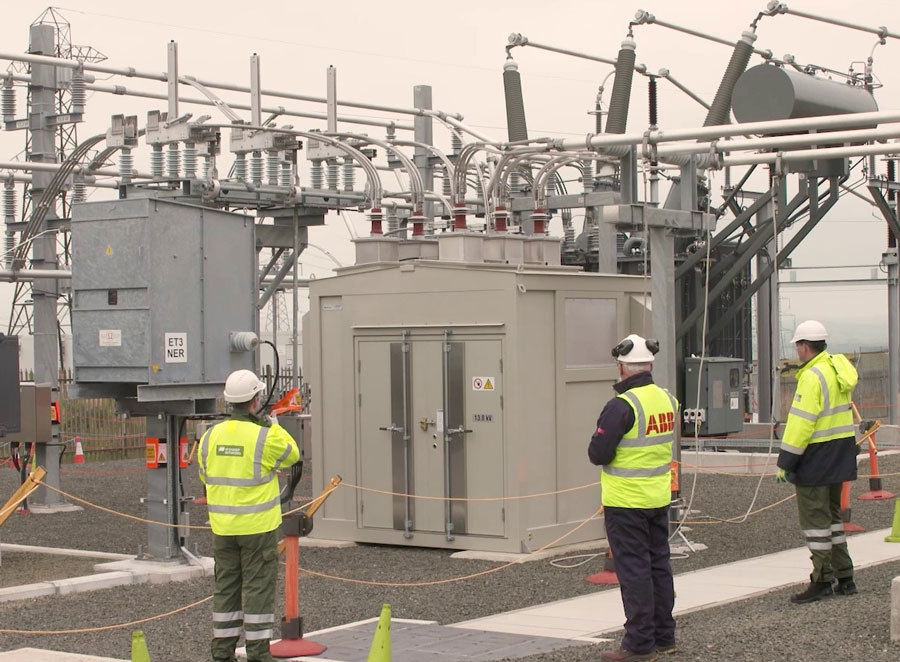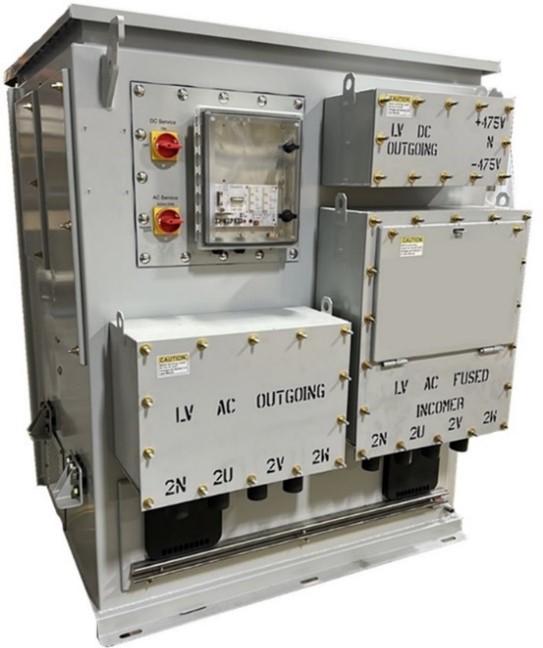
SP Energy Networks: Powering the Future - Using Power Electronics to Revolutionise the Electricity Network. Graham Campbell - Director Processes and Technology
Over a decade ago, SP Energy Networks began investigating how we could use power electronics at scale to support our customers. Before 2011, Distribution Network Operators (DNOs) conducted a few research projects implementing power electronics. However, when the UK government launched their Carbon Plan to reduce Greenhouse Gas (GHG) emissions, research and projects based on power electronics started to increase. In response, SP Energy Networks delivered feasibility projects in medium and low voltage power electronic technologies on live distribution networks, concluding that they had great potential to enable the uptake of Low Carbon Technologies (LCTs) such as Electric Vehicles, Solar Photo Voltaic and Heat Pumps that were critical in meeting GHG reduction targets.
A decade later, following unprecedented growth of LCTs, SP Energy Networks, in collaboration with industry and academic partners, is leading the way in power electronic innovation, supporting the industry in how this technology can be used to benefit homes, businesses and renewable developers.
At their largest scale, power electronics find application in both Transmission and Distribution networks to help support the move to decarbonised electricity grids, which can respond to the ever-increasing demand placed on them. Power electronics also mitigate the need for time consuming and costly network upgrades, allowing us to connect LCTs to the grid at the scale and pace needed to reach Net Zero.
 Our innovation team has been at the helm of power electronic advances. The industry-leading Phoenix Project showed how power electronics can be used to help support the move from fossil fuel generation to renewable generation by demonstrating the use of a hybrid-synchronous compensator to maintain the security and stability of the GB Transmission network. Angle DC, a European first, adapted existing rail power conversion technologies to realise a Medium Voltage DC (MVDC) interconnector, which is smoothing the way for the integration of increasing volumes of renewable generation and accommodating the growth of electricity demand on the Anglesey and North Wales Distribution network.
Our innovation team has been at the helm of power electronic advances. The industry-leading Phoenix Project showed how power electronics can be used to help support the move from fossil fuel generation to renewable generation by demonstrating the use of a hybrid-synchronous compensator to maintain the security and stability of the GB Transmission network. Angle DC, a European first, adapted existing rail power conversion technologies to realise a Medium Voltage DC (MVDC) interconnector, which is smoothing the way for the integration of increasing volumes of renewable generation and accommodating the growth of electricity demand on the Anglesey and North Wales Distribution network.
 The team’s power electronic innovation also extends to Low Voltage (LV) Distribution networks. A world-first, LV Engine is demonstrating how they can be used in local substations to improve the quality and efficiency of power supplied into customers’ homes. While the D-Suite project is exploring the feasibility of deploying new applications of proven high voltage power electronic technology onto the LV distribution network to make it more efficient and support customer’s adoption of LCTs.
The team’s power electronic innovation also extends to Low Voltage (LV) Distribution networks. A world-first, LV Engine is demonstrating how they can be used in local substations to improve the quality and efficiency of power supplied into customers’ homes. While the D-Suite project is exploring the feasibility of deploying new applications of proven high voltage power electronic technology onto the LV distribution network to make it more efficient and support customer’s adoption of LCTs.
Power electronics are a game changer for ensuring we have a sustainable and efficient energy future that is resilient and reliable for our customers. As capacity increases, power electronics are a key component in increasing capacity and stability, while providing more flexibility for customers.
Our achievements to date are critical to our decarbonisation journey, but we recognise there is still more to do and welcome conversations with industry experts who are interested in discussing the application of power electronics. If you have an idea you would like to discuss with the innovation team or if you’d like more information on a particular project, please get in touch via spinnovation@spenergynetworks.co.uk.